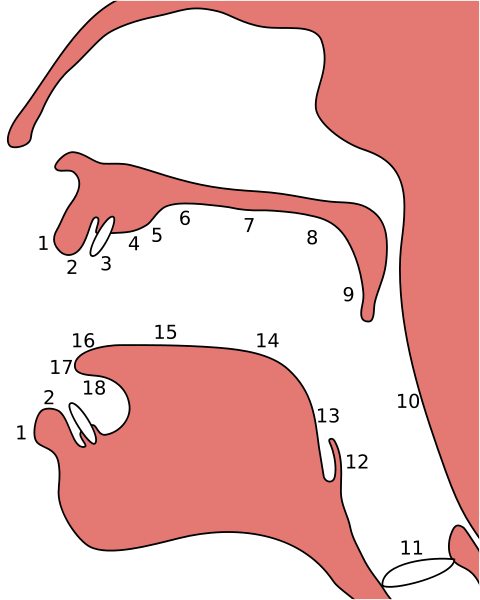
English Phonology.
Welcome to my phonology page.
My index.

Definitions:
Consonant:
/kons![]() n
n![]() nt/
nt/
• noun 1 a speech sound in which the breath is at least partly obstructed and which forms a syllable when combined with a vowel. 2 a letter representing such a sound.
• adjective (consonant with) in agreement or harmony with.
— DERIVATIVES consonantal adjective.
— ORIGIN Latin consonare ‘sound together’, from sonus ‘sound’.
• noun 1 a speech sound in which the mouth is open and the tongue is not touching the top of the mouth, the teeth, or the lips. 2 a letter representing such a sound, such asa, e, i, o, u.
— ORIGIN Old French vouel, from Latin vocalis littera ‘vocal letter’.
/difthong/
• noun a sound formed by the combination of two vowels in a single syllable (as incoin).
— ORIGIN Greek diphthongos, from di- ‘twice’ + phthongos ‘sound’.
Kestrel:
Pronunciation:
Philology:
Definition: • noun 1 the study of the structure, historical development, and relationships of a language or languages. 2
— DERIVATIVES philological adjective philologist noun.
— ORIGIN originally in the sense love of learning
: from Greek philologia.
Crow:
Etymology: O.E. crawe, imitative of bird's cry. Phrase eat crow is probably based on the notion that the bird is edible when boiled but hardly agreeable; first attested 1851, Amer.Eng., but said to date to War of 1812 (Walter Etecroue turns up 1361 in the Calendar of Letter Books of the City of London). Crow's foot "wrinkle around the corner of the eye" is late 14c. Phrase as the crow flies first recorded 1800.
Spanish translation: cuervo.
1. m. Pájaro carnívoro, mayor que la paloma, de plumaje negro con visos pavonados, pico cónico, grueso y más largo que la cabeza, tarsos fuertes, alas de un metro de envergadura, con las mayores remeras en medio, y cola de contorno redondeado.